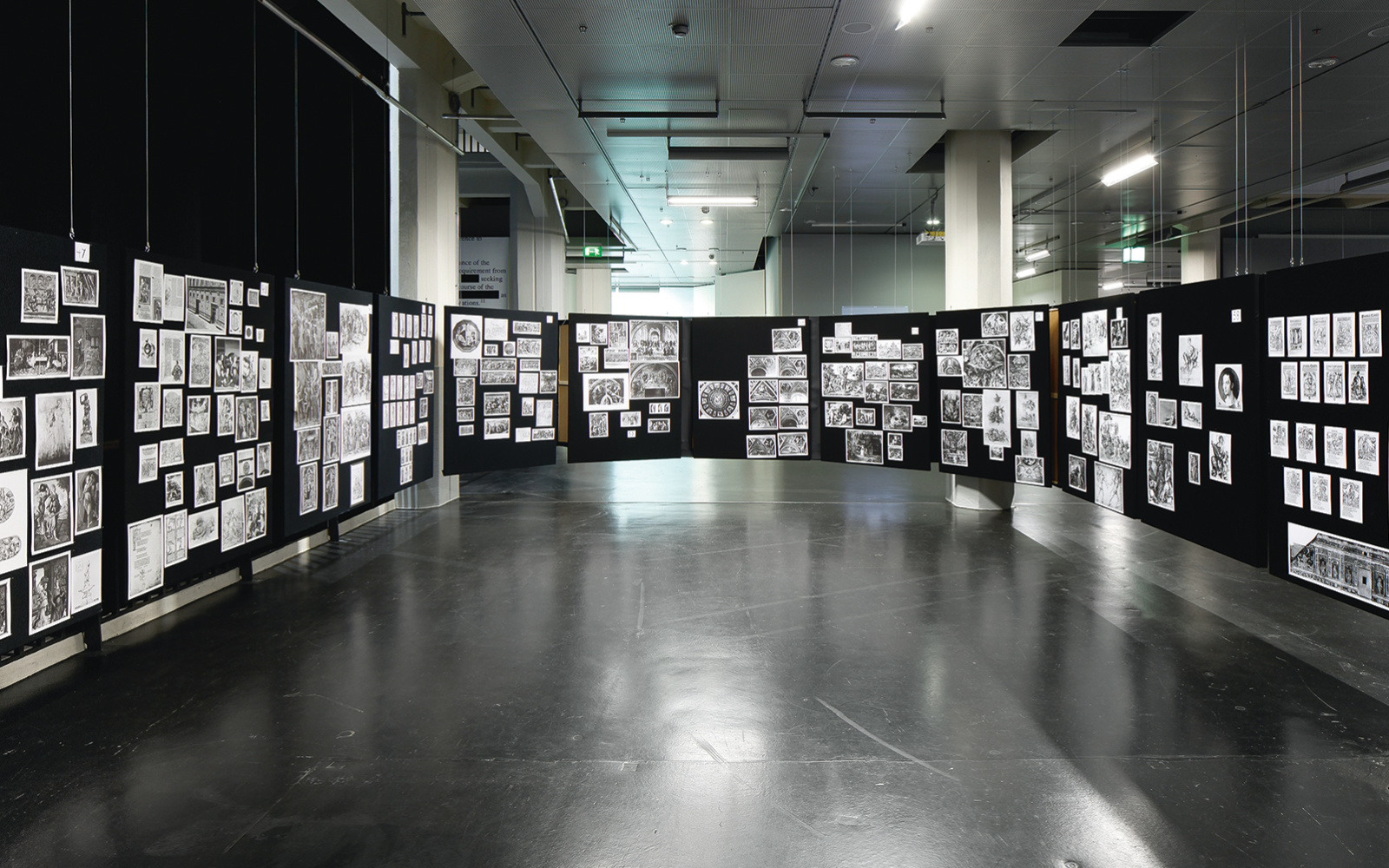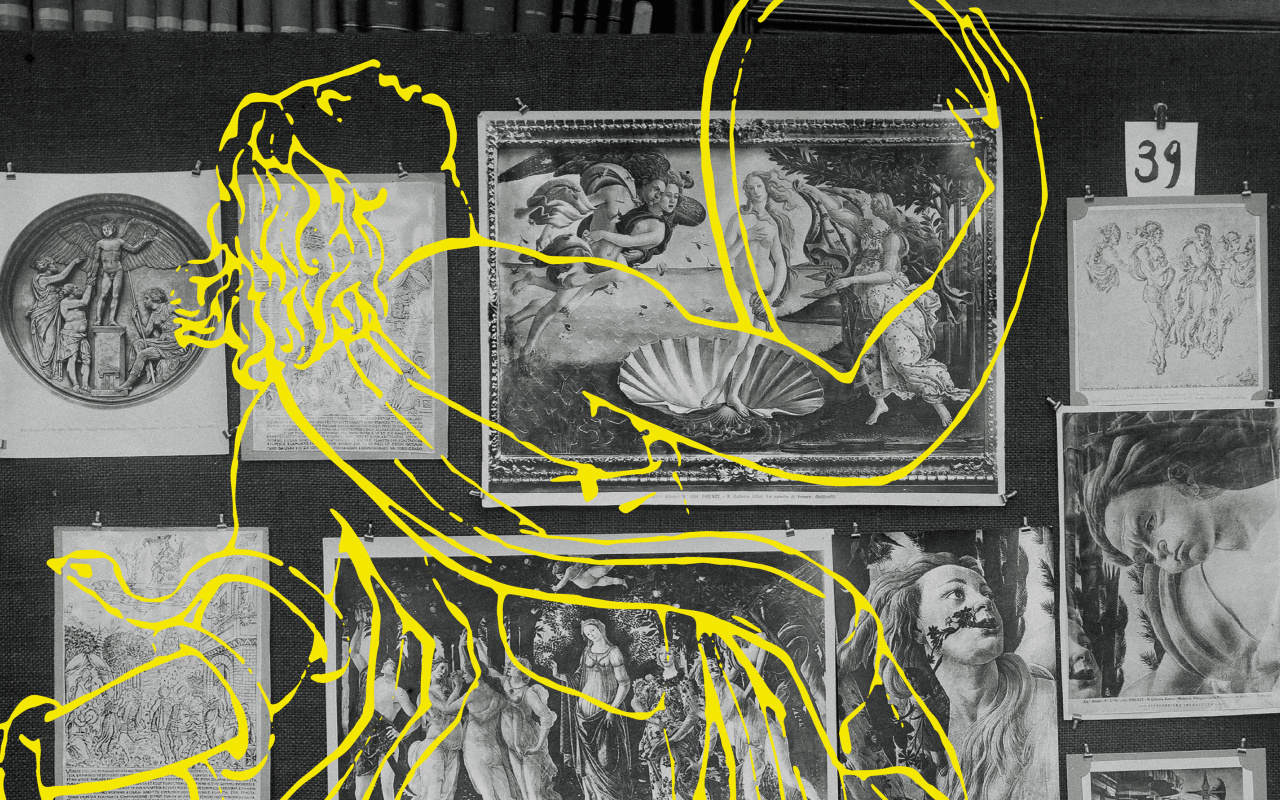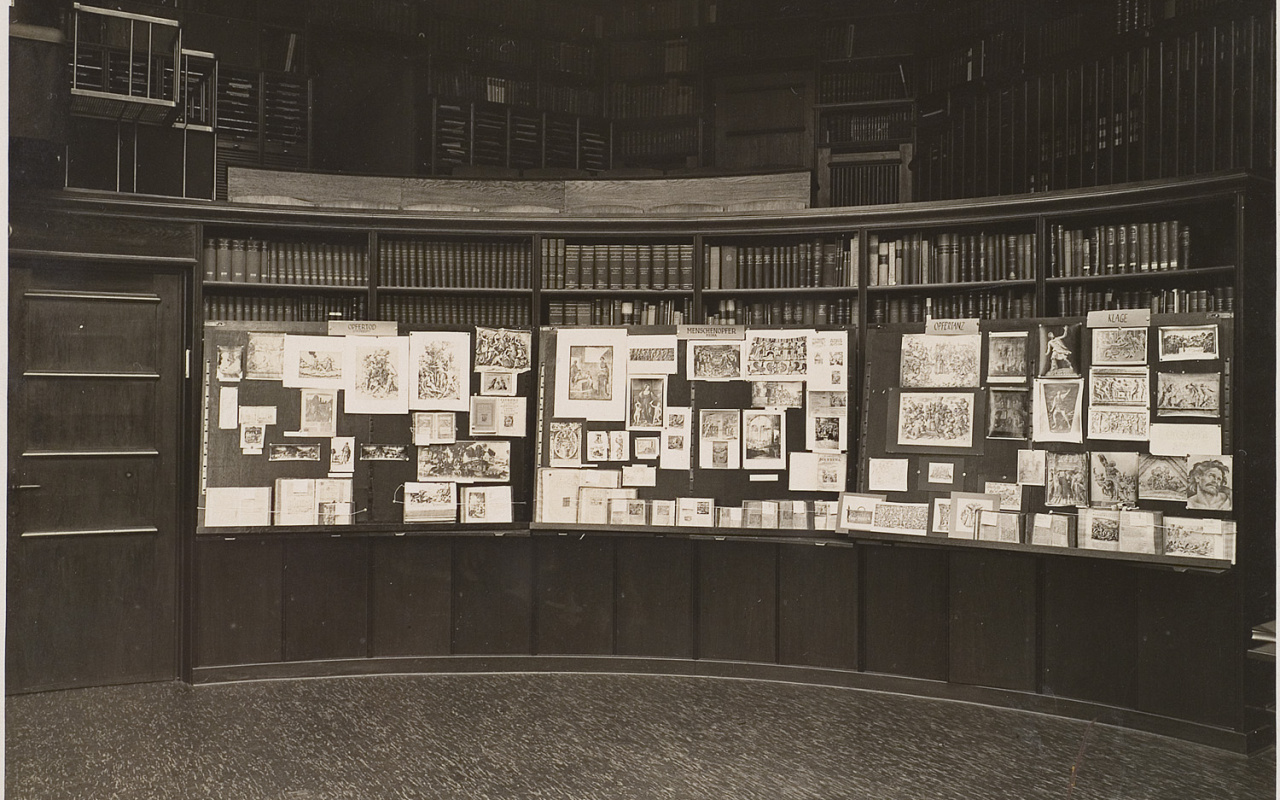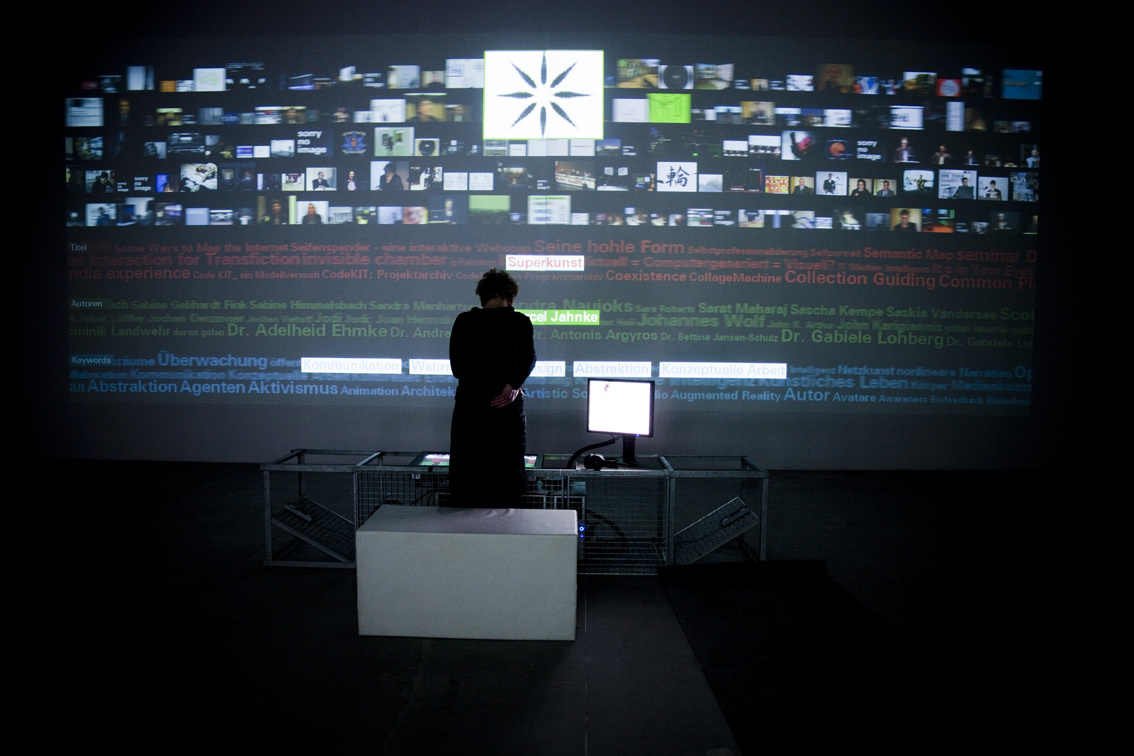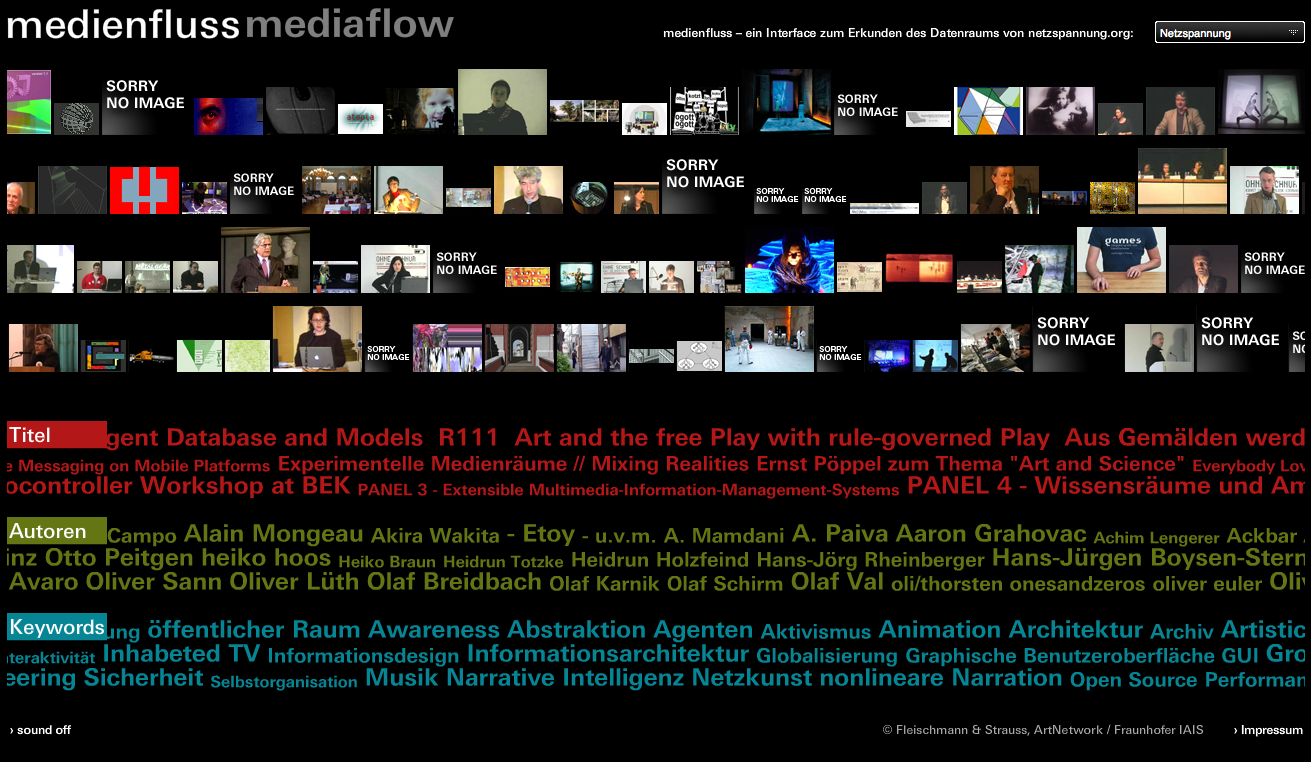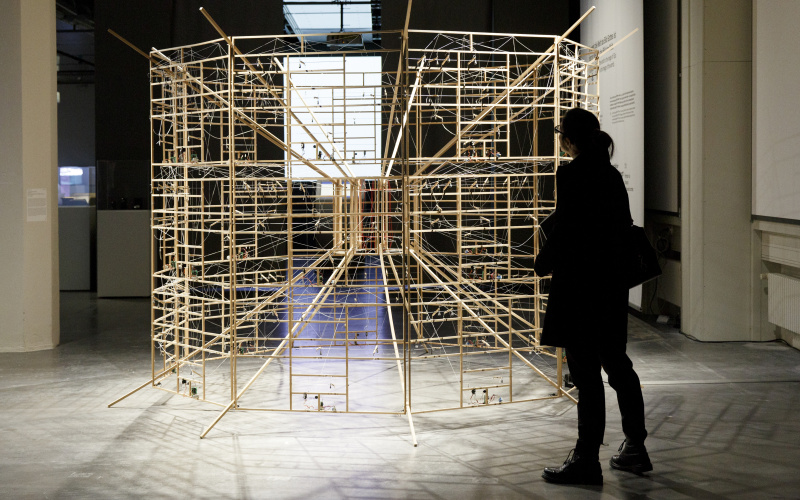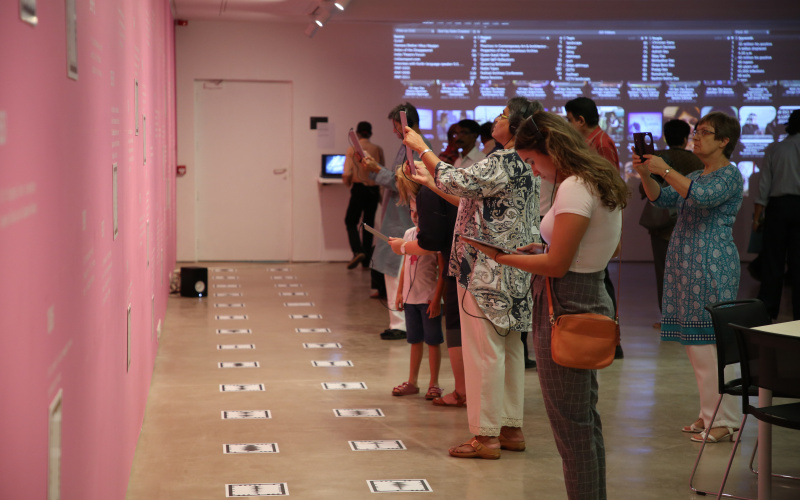Atlas or oracle?
The concept of the archive between Warburg and the online database. Aby Warburg’s »Mnemosyne« atlas was long forgotten, but has recently been experiencing more attention again.
BY DANIEL BECKER
Is the thinking of Aby Warburg perhaps to be understood as a precursor for artistic positions that grapple with the digital information overload? An encounter of Warburg’s atlas with the media art of Monika Fleischmann and Wolfgang Strauß.
The title of Warburg’s »Mnemosyne« atlas is not an adornment, it actually relates to the inscription »ΜΝΗΜΟΣΥΝΗ« (Mnemosyne), which was written over the entrance to the historic »K.B.W.«, the Warburg Library of Cultural Studies in Hamburg. Visitors also entered ZKM’s »Aby Warburg. Mnemosyne Image Atlas« exhibition in Autumn 2016 through a lintel with the inscription »Mnemosyne«. »Mnemosyne«, the personification of memory, is therefore rightly seen as a general principle of Warburg’s thinking: He himself repeatedly accentuated the role of the memory. [1]
However, the fact that the building entrance and the title of the image atlas have the same inscription is more than just an insignia of this order of thought. It refers to the architectural and spatial elements of the image atlas: The composition of different images from different media – from sculptures and painting to drawings and stamps – create so-called »conceptual spaces« for Warburg.
In the cosmos of images – the beginnings of the image atlas
On the famous photo that shows an early presentation of the panels of the image atlas in the K.B.W., these »conceptual spaces« are doubled. It is not just the six panels arranged side by side that open up such a space. The ellipsoid lecture and reading hall is in no way purely coincidental. It is in fact part of the agenda.
The elliptical form of the planetary orbit, which was discovered by Johannes Kepler in 1605, was understood during the renaissance to be a symbol of the spontaneity of the cosmos and stands as an example for Warburg’s dialectical thinking: Between the ancient world and the present, between ritual and culture, between mythos and rationality, his thought process moves like the ellipsis between their two focal points. His conceptual spaces originate from the tension of the two poles. This cosmic concept can also be seen on panels A to C of the image atlas.
Accessibility of information
The »netzspannung.org« piece of the artists Monika Fleischmann and Wolfgang Strauß moves in a similar »conceptual space«. In this wok (and in many others), Fleischmann und Strauss grapple intensively with archiving and the accessibility of information.
»netzspannung.org« is understood to be a type of »education platform« for media art, which tries to create networks of knowledge between artists and academics, between artwork and lectures. In this respect, the work is similar to the image atlas, as connections and links lead to a genealogical process of knowledge formation. A decisive position is awarded to the user in this way: He can make his own new relationships.
From the panel to the display
However, Warburg, who is frequently seen as a media scholar avant la lettre, was sceptical about what mass media today characterises: »Telegram and telephone are destroying the cosmos. Mythical and symbolic thinking strive to form spiritual bonds between humanity and the surrounding world, shaping distance into the space required for devotion and reflection, space which is then murdered by the instantaneous electric connection.« [2]
In networking technology, Warburg sees the end of a culture which creates »conceptual spaces« from the interplay of opposites. You could agree with him in terms of today’s search engines and databases, as the data here is normally sorted by keywords, linear order or simple topicality. Information is only consumed ad hoc and no longer reflected. However, it is precisely this problem with which Fleischmann and Strauß grapple in the works »Semantic Map« (2002-2004), »Digital Sparks Matrix« (2006) and »Medienfluss« (2006) (Browser-Version 2008).
All works are all dedicated to the visual communication of their online platform »netzspannung.org«. Instead of a static presentation, which links all possible data immediately, these works do not deal with the detection (of known information) but with the searching and foraging for new connections. [3] This is where Warburg’s space required for devotion and reflection obtains its digital update through the database interface as the process of linking or surfing by the user becomes relevant in a type of digital contemplation.
Particularly in the »Medienfluss« piece, a visual similarity to Warburg is found again. Instead of a series of image panels, there are two flows of information here – images and words – which move over the (exhibition) display. The user can select specific terms using the touchscreen and create new connections on this basis. The (information) flow comes »virtually to a standstill, the stopping of the data flow is connected to the pausing of the performer and the deepening of his perception.« [4]
In this spatial character of the database access, through which the »instantaneous electric connection« is conflicted with the viscosity of the data flow, Fleischmann/Strauss not only join ranks with the tradition of Warburg’s »Mnemosyne«, they address in general the concept of spatial presentation for encyclopaedic knowledge: This concept has its most famous precursor in the »Memory Palace« of ancient rhetoric and in Giulio Camillo’s »Memory Theatre«.
Mnemosyne in the flow of time
However, the six mentioned panels in the K.B.W. only show a precursor to the encyclopaedic image atlas which was planned as a book. In the same way, there is the question of the extent to which the condition in 1929 can have an all-encompassing claim, as although there were repeated attempts to complete it, it remained uncompleted by Warburg. Exactly because the images were only temporarily fixed using pins, the image atlas – in comparison to the planned publication of documentary photographs – is only a snapshot of the contemporary perspectives of art.
Should you, according to Warburg, not take his image atlas as an »image vehicle« which opens up »conceptual spaces«? Can »Mnemosyne« be understood accordingly not just as memory personified, but also as the source and only in contrast to Lethe, as she describes Pausanias in relation to the Oracle of Trophonios – as oblivion following knowledge? Because just like the image atlas is only fragmentary in its present form, the links that emerge from an interactive database are continually rewritable.
Consequently, every interaction is a decision between knowledge formation and knowledge deletion, in which new networks are tightened and old threads are destroyed. »Media flow« like »Mnemosyne« are correspondingly, be it intentional or not, fragmentary and therefore only the source or origin of a body of knowledge; the actual formation of knowledge arises through decisions in the interaction, reception or (re)configuration of the existing content by the user over the course or, or better, in the flow of time.
The work of Fleischmann and Strauss consequently enriches the discourse around collections of knowledge, as the focus here is not – as with classic archive research that is connected with prior knowledge – on the targeted search, but rather on rummaging and finding. This affirmation of media-genuine »surfing« in the sea of data of an online database registers in a long history of concepts about memorisation, archiving and data collection. However, it also makes it possible to question Warburg’s image atlas on its medial conditions.
_____
[1] Aby Warburg, Mnemosyne Einleitung, in: Ders.: Werke in einem Band, Ed. v. Martin Treml et al., Berlin 2010, P. 629.
[2] Aby Warburg: Schlangenritual. Ein Reisebericht, Berlin 1992, P. 59.
[3] Wolfgang Strauss, Das digitale Archiv als Findemaschine: Kuratorische Strategien für das Archiv von netzspannung.org, view online.
[4] Monika Fleischmann/Wolfgang Strauss, Das digitale Archiv und seine Inszenierung: Suchen und Finden im vernetzten Wissensraum, in: Kai-Uwe Hemken, Kritische Szenografie: Die Kunstausstellung im 21. Jahrhundert, Bielefeld 2015, P. 301-314, here: P. 310.
About the Author
Daniel Becker is an art historian with a focus on contemporary art and digital aesthetics. Since 2014, he has been a PhD student at the Mimesis IDK at Ludwig Maximilian University in Munich.
Aby Warburg. Mnemosyne Bilderatlas
Reconstruction – Commentary – Revision
01.09.2016 – 13.11.2016
ZKM_Atrium 1+2
Category
News Category
- latest discoveries
